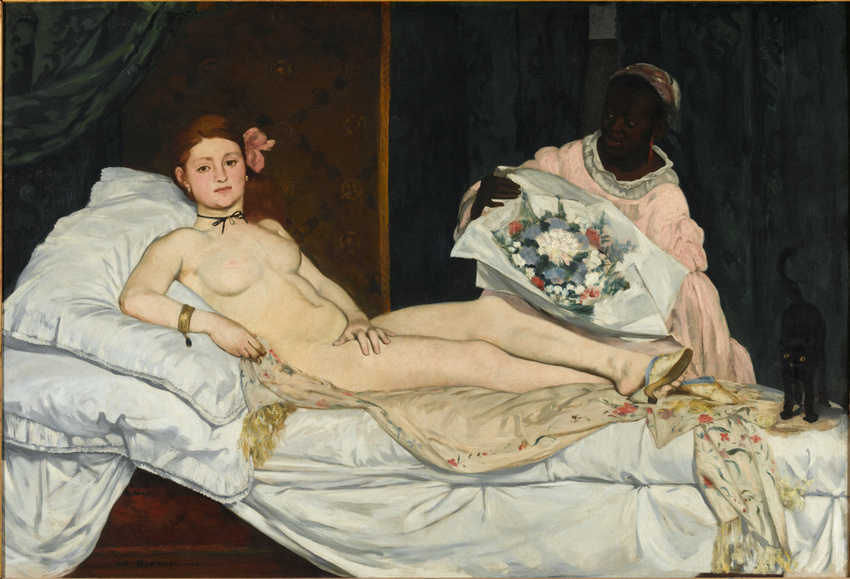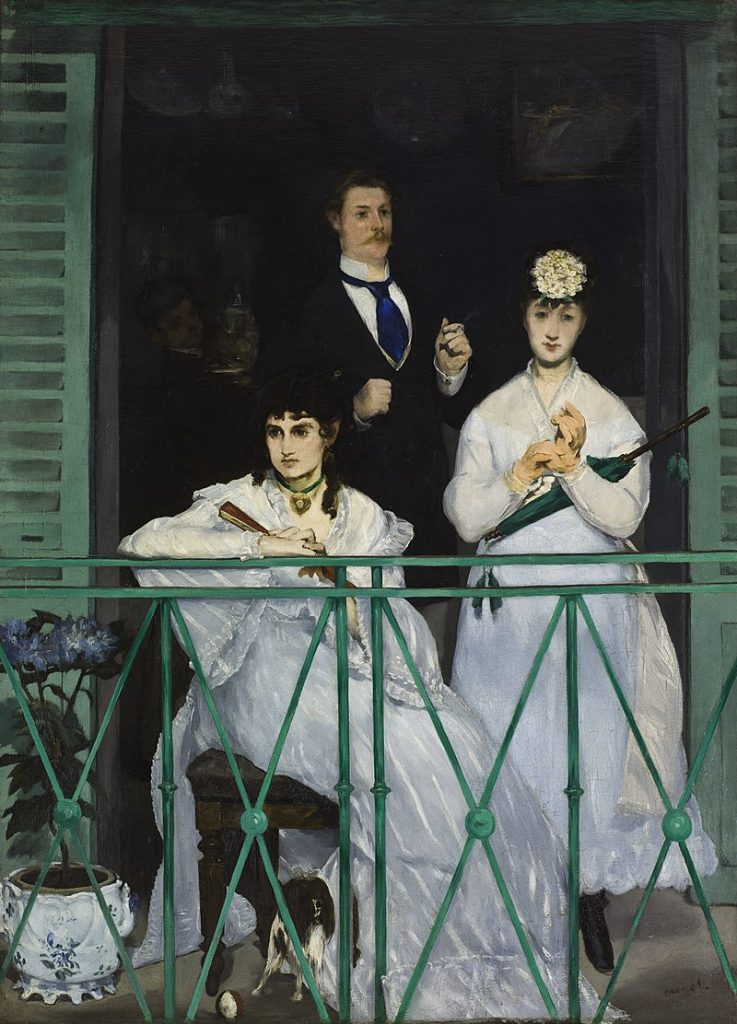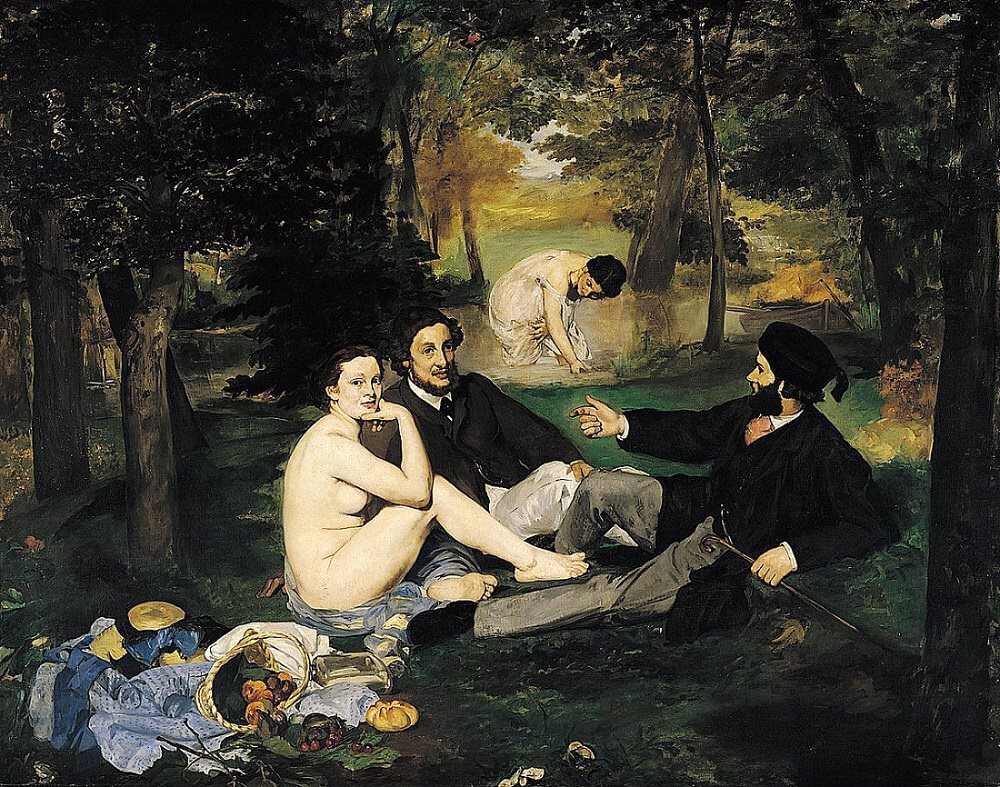
Édouard Manet, Olympia, 1863.
Édouard Manet (1832-1883) was a prominent French painter and a key figure in the development of modern art during the 19th century. His works played a significant role in the transition from Realism to Impressionism, and he is often considered a bridge between the two movements.
Manet’s art is characterized by his innovative approach to painting, his rejection of traditional academic conventions, and his willingness to challenge societal norms and artistic conventions of his time. Some of the key aspects of his art and its relationship with modernism include:
- Breaking away from Academic Art: In the 19th century, the dominant style in the art world was Academic Art, characterized by strict rules and idealized representations of subjects. Manet, however, chose to portray contemporary life, often featuring ordinary people and urban scenes in a more candid and realistic manner. This marked a departure from the traditional academic approach and laid the groundwork for modernism’s focus on individual expression and subjective perspectives.

The Balcony, 1868–69, Musée d’Orsay, Paris
Rejection of Historical and Mythological Themes: Unlike Academic painters who favored historical or mythological subjects, Manet’s choice of contemporary subject matter was considered unconventional at the time. His paintings such as “Le Déjeuner sur l’herbe” and “Olympia” caused controversies due to their depictions of nude women in modern settings, challenging the established norms of classical art.

Le Déjeuner sur l’herbe, 1862 – 63, Musee d’Orsey Paris
Impressionist Techniques: Though Manet is not considered a full-fledged Impressionist, he did influence and interact with the Impressionist movement. He employed loose brushwork and a lighter color palette, which were precursors to the techniques later embraced by Impressionists like Claude Monet and Pierre-Auguste Renoir. These techniques contributed to the development of modernism, emphasizing the artist’s interpretation of a scene rather than strict representation.
Modern Urban Life: Manet often painted scenes set in Parisian cafés, theaters, and boulevards, reflecting the changing urban landscape and the effects of modernization on society. He captured the pulse of contemporary life, which resonated with the modernist interest in representing the world as it appeared in the present moment.
Flattening of Space: Manet’s paintings exhibited a tendency to flatten the pictorial space, blurring the distinction between foreground and background. This approach challenged the traditional illusion of depth and opened up new possibilities for modernist experimentation with composition and perspective.
Influence on Future Artists: Manet’s art had a profound impact on subsequent generations of artists. His innovative techniques and subject matter inspired many modernist painters, and he is often seen as a crucial precursor to movements like Post-Impressionism and even early aspects of Fauvism and Cubism.
Overall, Édouard Manet’s art and its connection to modernism lie in his willingness to challenge established norms, his exploration of contemporary life, and his influence on the development of new artistic techniques and approaches. Through his artistic vision and rejection of traditional norms, he paved the way for the radical changes that characterized modern art in the late 19th and early 20th century.
